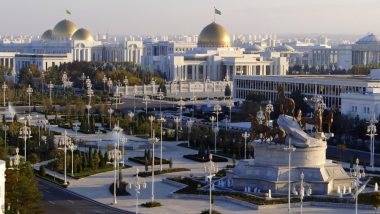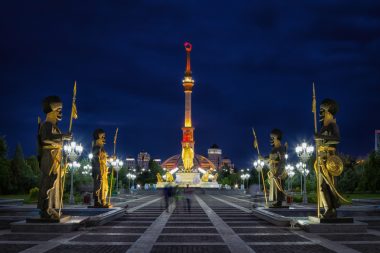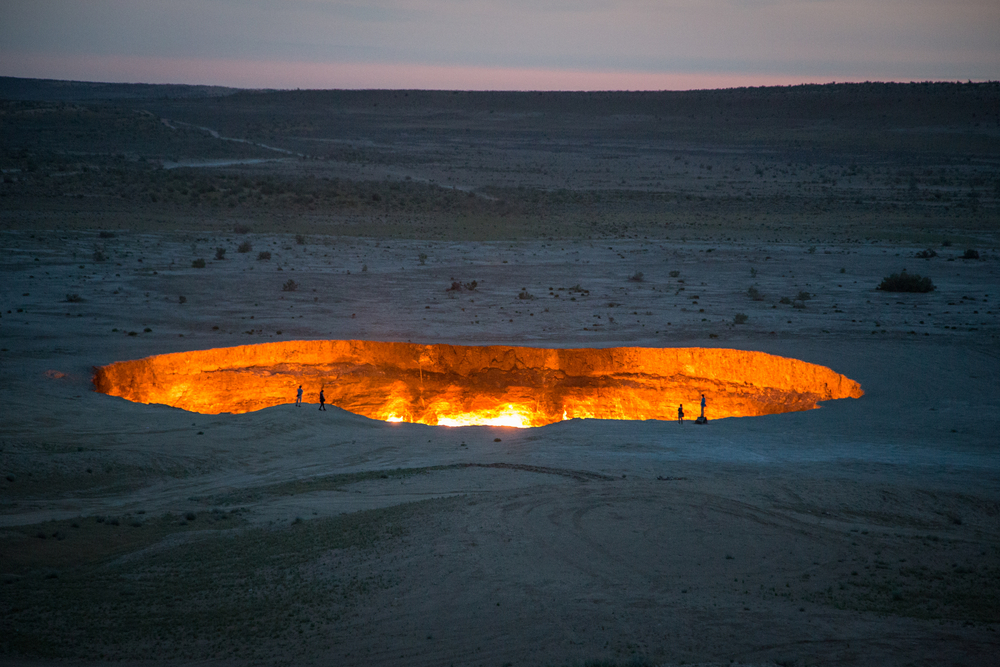Located between Tajikistan in the east and the Caspian Sea in the west, between Uzbekistan in the north and Afghanistan and Iran in the south, Turkmenistan has yet to be discovered as a travel destination. The Central Asian country has fantastic landscapes and a rich, ancient culture to offer. After all, it is located on the legendary ancient Silk Road. The country owes numerous archaeological ruins to it.
Special features Turkmenistan

Turkmenistan is a young state with an ancient history. It is a former Soviet republic and has been independent since 1991. Due to its location on the Silk Road, the country came into contact with diverse influences from other cultures at an early stage, which still shape it today. Today, Turkmenistan is a republic ruled by its president with dictatorial power. The country essentially lives from the export of its immense oil and gas reserves.
The Turkmens are about 90 percent Muslim. They are shaped by their past as nomads and are correspondingly hospitable. Travelers are welcomed with open arms, welcomed and even invited home, where they can get to know the – not only culinary – traditions of the locals.
In terms of landscape, Turkmenistan inspires with scree and sand deserts, these deserts make up over 95 percent of the country. But there are also stunning mountain ranges, deep gorges, ancient forests and, of course, the coast of the Caspian Sea. Numerous endangered animal species have settled in the country’s unique landscapes. The country is a paradise for hikers, adventurers and nature lovers.
It has a distinctly continental climate, with very hot summers and equally cold winters. In summer, Turkmenistan has by far the highest temperatures in all of Central Asia; but because of the very low humidity, they are easy to bear. The best times to travel are from April to June and from September to mid-November.
Popular cities in Turkmenistan

For most tourists, a journey through Turkmenistan certainly begins with the arrival in the country’s capital Ashgabad, because one of the country’s three international airports is located here. Ashgabad, the “abode of love”, has about 800,000 inhabitants and is by far the largest city in Turkmenistan. Founded in 1881, the city is located in an oasis in the Karakum Desert near the Iranian border. There is a university, museums, theaters and a zoo.
In 1948, Ashgabad was almost completely destroyed in a severe earthquake, so there is almost no old building fabric. Instead, the city was rebuilt in the pompous style of Stalinist architecture with colossal large buildings and wide boulevards and with many public parks. Even after the end of the Soviet Union, the new rulers of Turkmenistan had themselves architecturally immortalized with statues and equestrian statues.
The Historical Museum, the Museum of Fine Arts and the Regional History Museum are worth a visit. The Carpet Museum bears witness to the ancient tradition of Turkmen handicrafts, especially carpet weaving, which is important throughout the Central Asian region. A statue of Lenin dates back to the time of Soviet rule, overlooking the city from a pedestal made of carpet patterns. The Botanical Garden is the most important of the many parks and has a collection of both native and exotic plants. Other important parks include the green space around the Independence Tower and the park commemorating the tenth anniversary of independence.
Another city worth seeing is Turkmenabad, the second largest city in the country with just over a quarter of a million inhabitants. Among the sights of the city are the Dunya Bazaar with a wide range of goods from Turkmenistan and neighboring countries, the Allamberdar Mausoleum from the 11th century, the ruins of the settlement of Amul from the 10th century and the remains of the Dayakhatyn caravanserai.
Sights in Turkmenistan
The whole of Turkmenistan is a unique sight with its magnificent landscapes, and a day trip by camel to the desert or to the Umbar Dere waterfall is highly recommended. But here are a few selected destinations:
Kyrk Gyz
Kyrk Gyz, the “Cave of the 40 Girls”, is located about 400 kilometers from Ashgabad. According to legend, 40 girls hid here from a band of robbers, they were fed there by a mysterious old woman and, after praying to the gods, found an exit from the cave that the robbers did not know. On closer inspection, the stalactites in the cave turn out to be strips of fabric. Tradition says that whoever throws up such a strip will have a wish fulfilled if it gets stuck on the cave ceiling.
Near the cave, you can marvel at dinosaur footprints that have survived the last 65 million years unscathed.
World Heritage Site Merv
Merv on the Silk Road was one of the most important cities in the Islamic world, along with Baghdad, Cairo and Damascus. Merv reached its greatest prosperity in the 11. and 12th century, when the city was the capital of the Seljuk Empire. Their empire stretched from the Amuderya River to the Mediterranean Sea. Merv attracted scientists and traders from all over the world. However, the city could not resist the raids of the invading Mongols in 1221 and was completely destroyed along with all its monuments and libraries.
Kunyaurgench
Famous scientists such as Ali Biruni and Avicenna have lived and researched in this city. This is where the fight against Genghis Khan and his army took place. There are some architectural monuments and buildings from this period. The place is still sacred for Muslims.
Derveze
The 70-metre-diameter and 40-metre-deep gas crater of Derveze is located in the middle of the Karakum Desert and was formed in 1971 when a large, gas-filled cavity was drilled during test drilling. The rock cover collapsed and the gas began to escape. The engineers decided to burn off the gas, but contrary to expectations, the fire has not gone out since. A particularly impressive spectacle at night, which the locals call the “Gate to Hell” for a reason.


